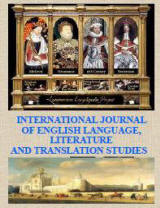Bridging Languages: Role of
Translanguaging as a Strategy in English Language Teaching
Dr. R. Sri Vidhya
ABSTRACT
Translanguaging, has evolved as a vital concept in
the field of English Language Teaching in the recent years
especially amongst learners whose native language is different from
their language of learning. It is a lively and engaging practice
wherein multilingual speakers draw from their entire linguistic
inventory while acquiring a new language. This paper investigates
the role of translanguaging in language learning, focusing on its
implications in English Language Teaching (ELT). The study provides
a birds’ eye view of how translanguaging supports language
acquisition by improving cognitive, social, and cultural
interactions. It discusses how multilingual learners employ
translanguaging in classrooms, the potential benefits of
translanguaging and the challenges faced by educators while
languages intervene. The article also examines how translanguaging,
when integrated into ELT practices, challenges traditional language
separation and encourages a more inclusive and context-responsive
approach.
Keywords: Translanguaging, Language Acquisition, English Language
Teaching (ELT), Pedagogical Practices, Multilingualism,
Bilingualism, Cognitive Development.




